
Hillingdon Hoard
Archaeologists working in West London on the HS2 project have uncovered a fascinating rare set of Iron Age potins, an early version of the coin, dating back to the 1st century BC.
The hoard of over 300 potins is a significant historical find, and was discovered in Hillingdon in 2020. The find may be recognized as “treasure” under British Law.
Uncovering the site
The site in Hillingdon was undergoing archaeological excavation and analysis led by HS2’s enabling works contractor, Costain Skanska joint venture (CSJV) and the archaeologists involved were elated to make such a significant discovery. Following a storm, ground conditions changed and revealed where the coins were buried.
‘The Hillingdon Hoard’ – as it has been called – dates back to the late Iron Age, during a period of change as the Romans began to establish themselves in Britain and create Londinium. The potins are based on coins struck in Marseille, France, about 2,175 years ago, which bear the left-facing head of Apollo on one side and a bull charging right on the other. The use of these early coins spread across northern Europe. In England their use was commonly linked to Kent, Essex or Hertfordshire. The term ‘potin’ refers to the base metal silver-like alloy used in coins. It is typically a mixture of copper, tin and lead.
Historians are unclear what the potins were used for during the Iron Age, particularly as the exchange of goods and service, or bartering is thought to have been the main method of commerce at that time, nor why the coins were deposited where they were found.
Archaeologists analysing the discovery believe the potins may have been to mark the boundary of a property or as an offering to the Gods – in a woodland clearing or near a sacred spring. It is not unusual for a hoard to be found in an apparently isolated location and they may also have been buried as saving hoards or as emergency hoards in times of crisis.
Because of the significance of the find, and the high number of coins, the local coroner was alerted. The coroner will determine whether the discovery amounts to ‘treasure’ after considering specialist evidence from the British Museum. The potins were taken to the Birmingham Museum and Art Gallery where they have been cleaned and preserved. The cleaning process used both water and the long thorn from a special plant. Records have then been sent to a specialist for cataloguing and further assessment to determine their origins and significance.
The value of the hoard has not yet been determined, nor has its future location. Under the Treasure Act, the Coroner will determine whether the find constitutes treasure and if a museum wishes to acquire the potins. On the advice of specialists at the British Museum the Coroner will conduct an inquest at which recommendations for the find will be made and a potential value placed upon it. The hoard was found during HS2 works on land that was occupied temporarily. HS2 is not making any claim on the hoard and under the Treasure Act archaeologists are not entitled to a share of any reward.
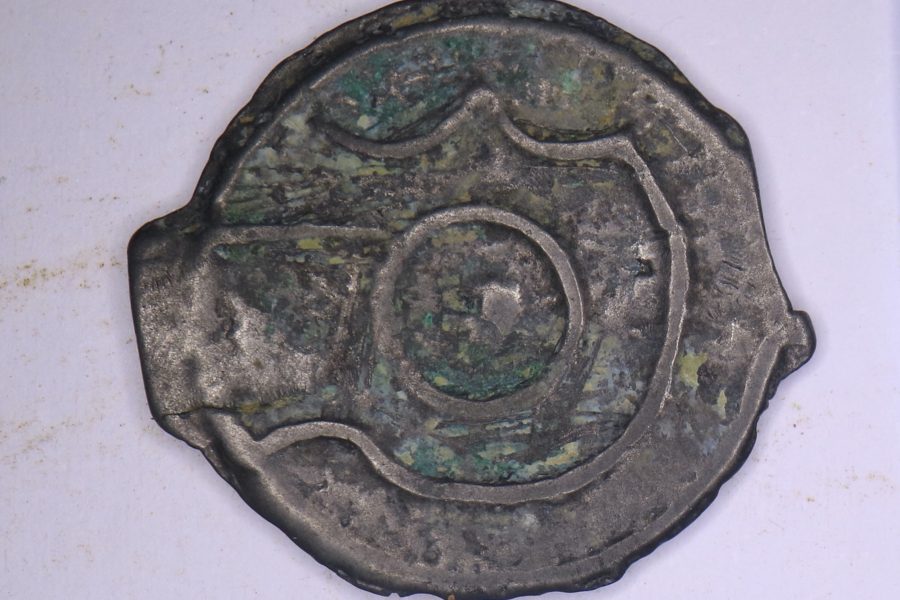
Slide 1 of 6: The head of Apollo on a coin found in the Hillingdon Hoard.
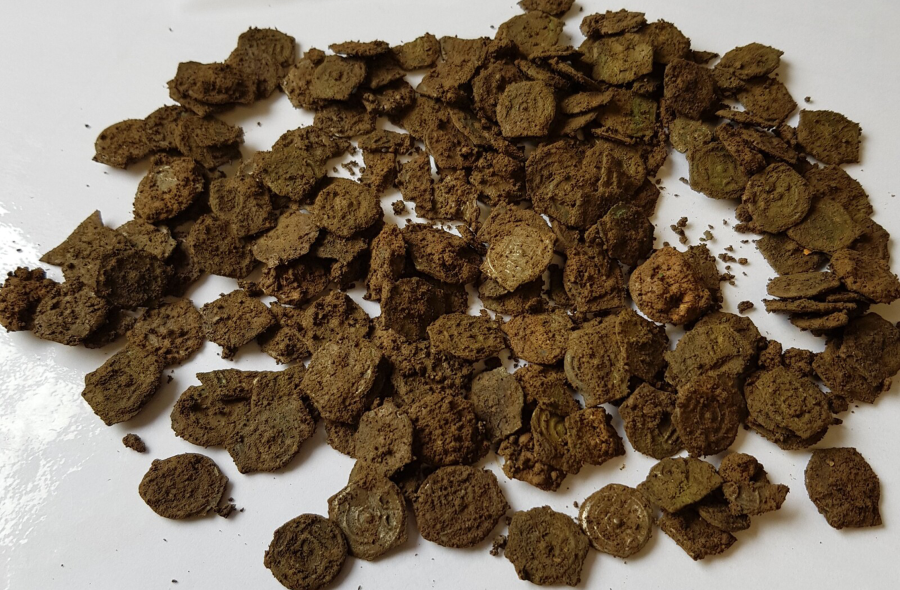
Slide 2 of 6: Potins after discovery.
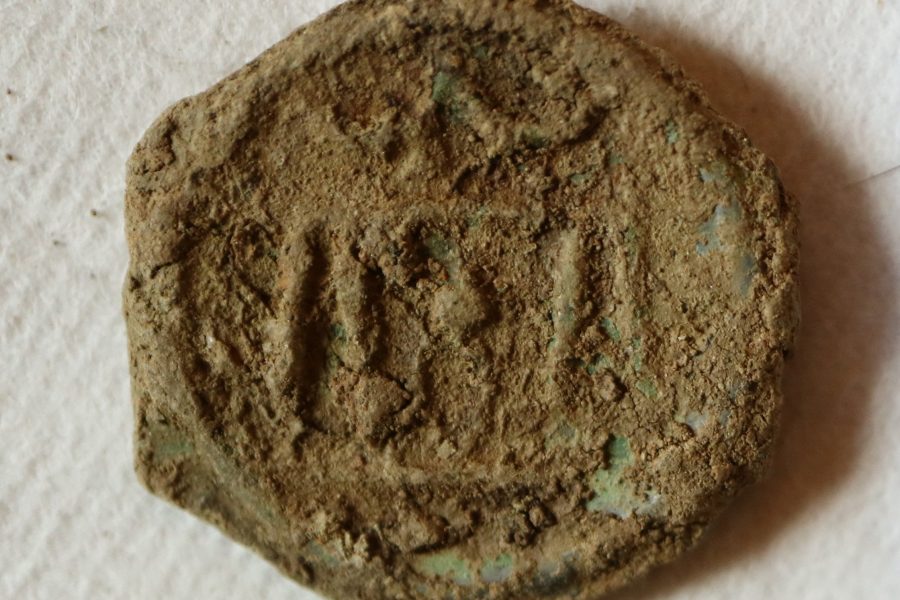
Slide 3 of 6: A coin found in the Hillingdon Hoard before conservation.
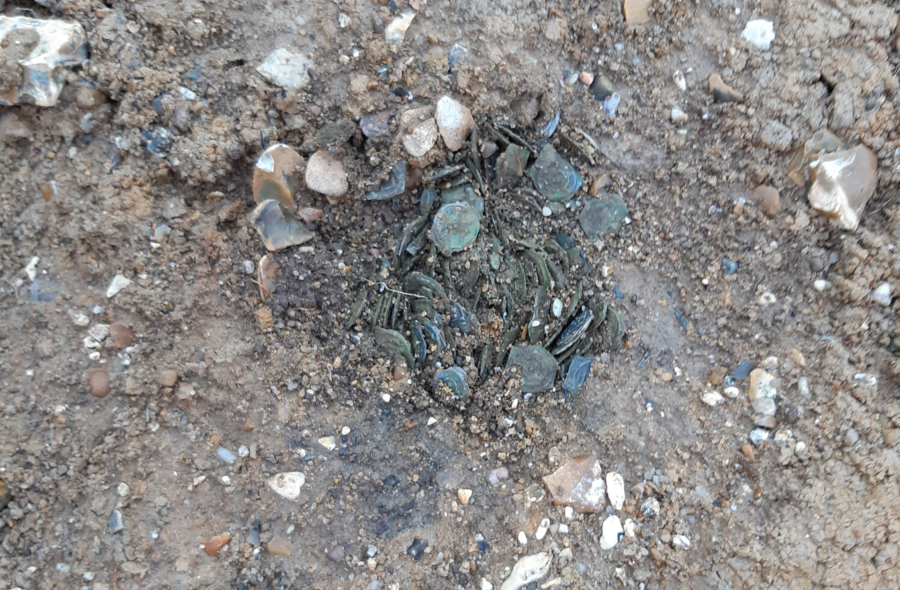
Slide 4 of 6: Potins after discovery in situ.
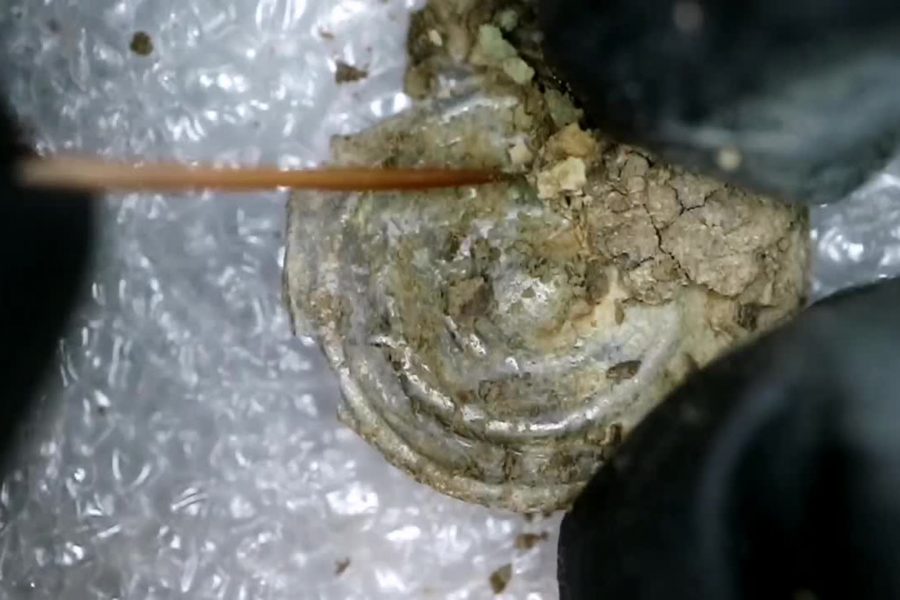
Slide 5 of 6: A coin found in the Hillingdon Hoard during the cleaning process.
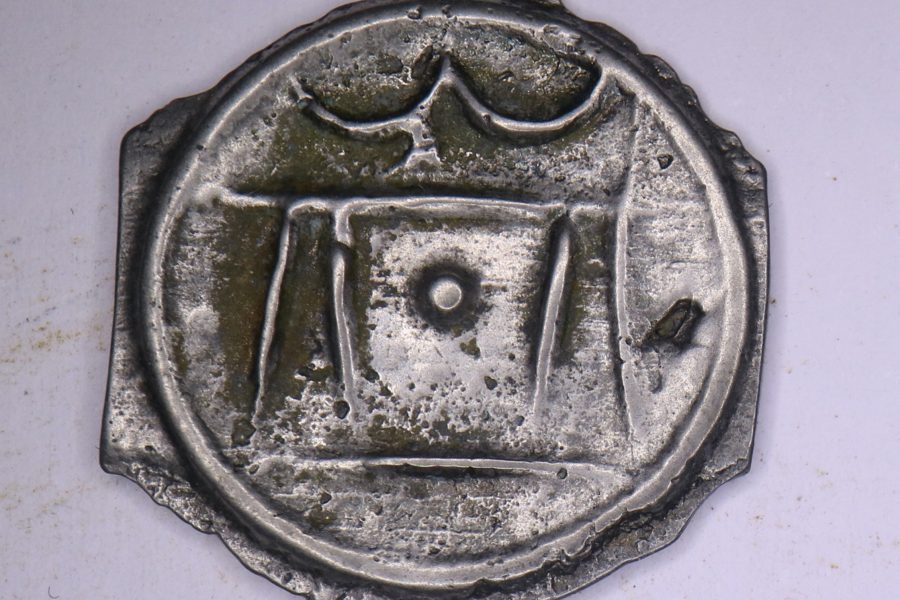
Slide 6 of 6: Bull image on a coin found in the Hillingdon Hoard.